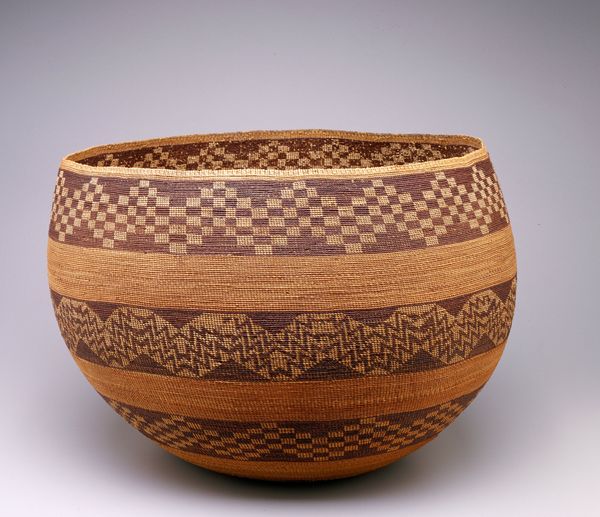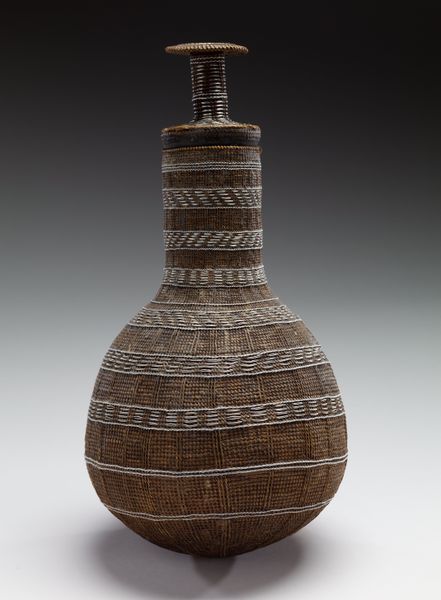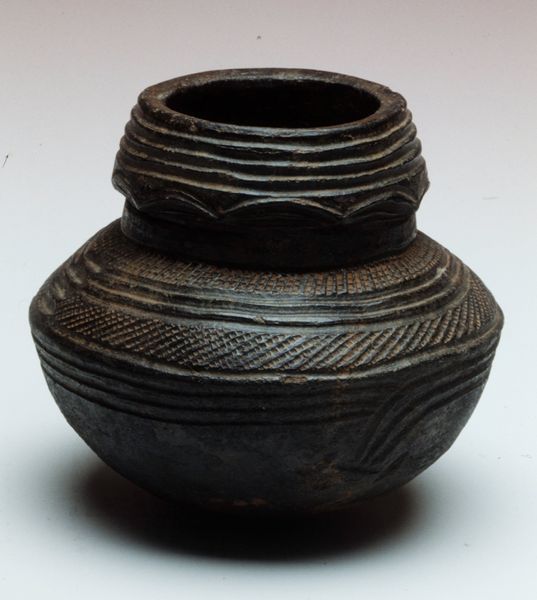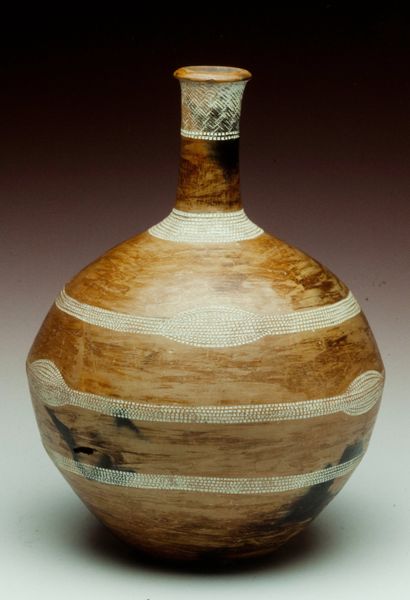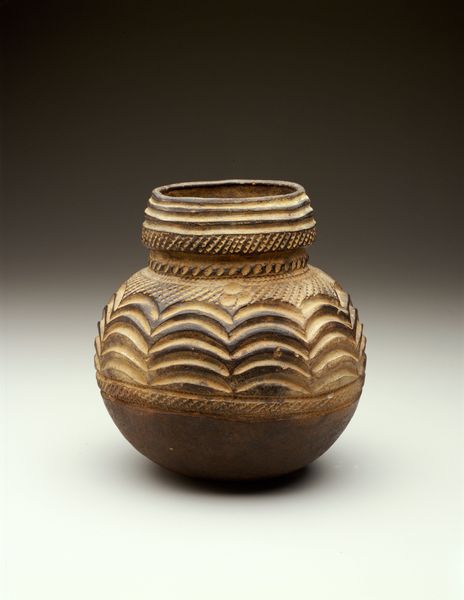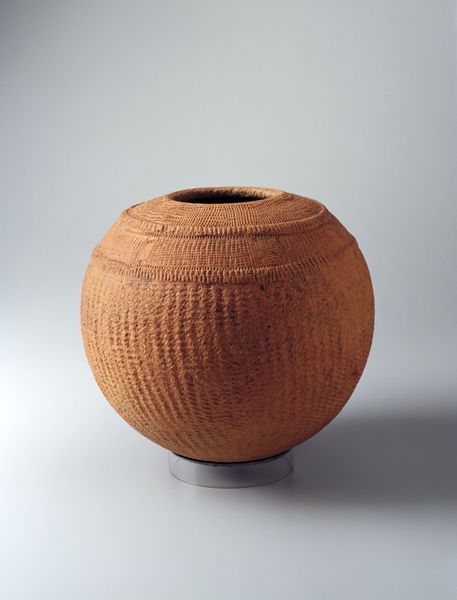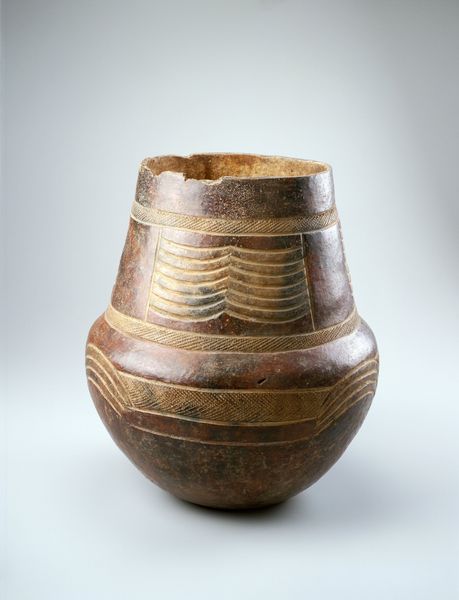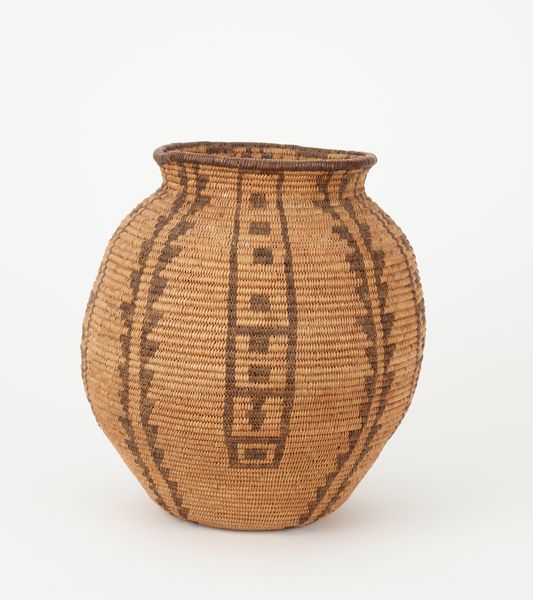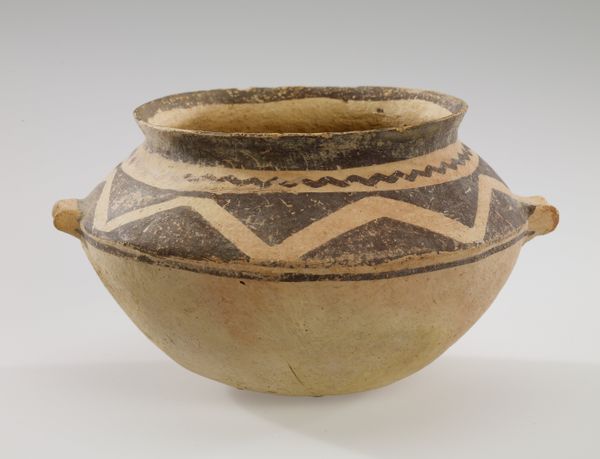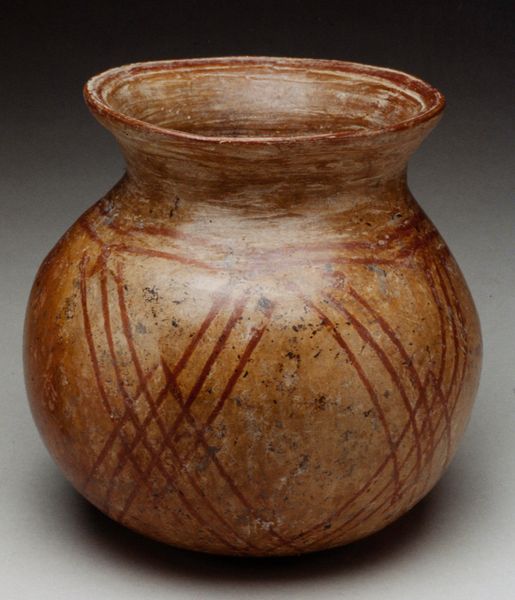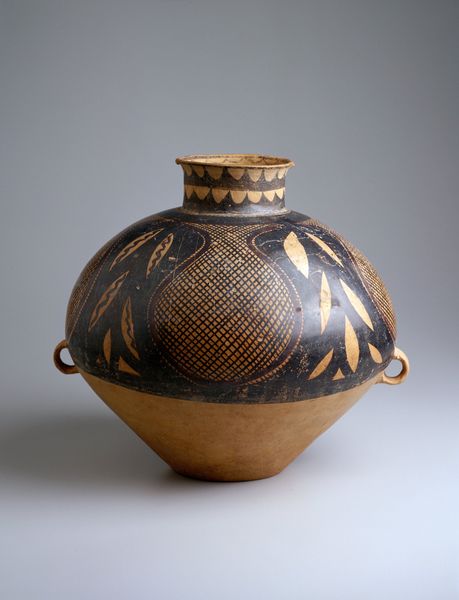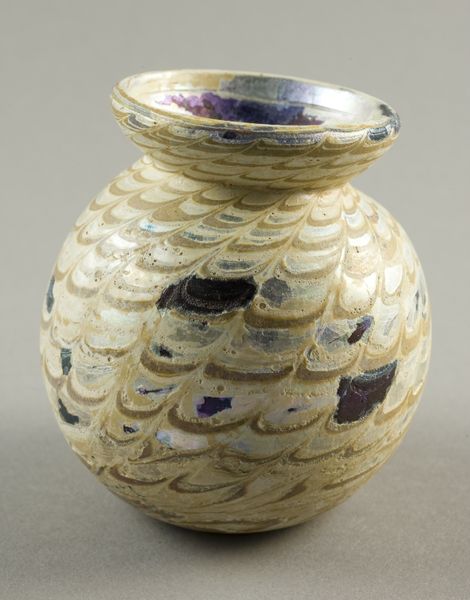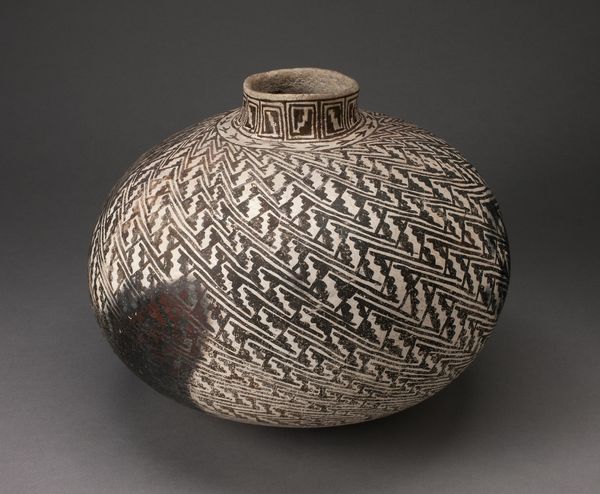
fibre-art, weaving
#
fibre-art
#
weaving
#
geometric
#
ceramic
#
earthenware
#
indigenous-americas
Dimensions: 20 1/4 x 16 x 16 in. (51.44 x 40.64 x 40.64 cm)
Copyright: Public Domain
Curator: So, here we have a Basket, crafted around 1900 by an Indé, or Apache, artist. Editor: It hums with… such quiet authority, doesn’t it? A powerful geometry rendered in the softest natural hues. Makes you want to trace those zigzags with your fingertips, feeling the intention. Curator: Constructed from woven plant fibres, it represents more than mere utility; the craftsmanship elevates it into a form of storytelling. Editor: And think about the labour! Hours upon hours bent to this task. Sourcing the materials, preparing the fibres, the repetitive motion—it’s an embodied rhythm that speaks of community and tradition, really interrogating our understanding of 'sculpture'. Curator: Precisely. These geometric designs, repeated with such precision, aren’t just decorative. They resonate with the cultural narratives and worldview of the Indé people. Perhaps a prayer made tangible, or a reflection on the cycles of life. Editor: Do you see how those dark patterns kind of 'flow' despite their blocky nature? It reminds me of flowing water captured midstream – that constant tension between design and execution fascinates me, given the sheer labor. It almost suggests a commentary on the relentless movement and work of everyday life. Curator: It's true, the materiality guides how the designs come together. Each twining, each stitch, becomes a building block for something both beautiful and deeply functional. A humble object transformed into a vessel of meaning. It prompts reflection. Editor: Which makes you wonder what purpose this vessel served. Was it made for sale? As an item of trade with outside markets? Was it meant for internal communal storage? The intersection of social history and object design is so poignant. Curator: Indeed. Standing before it, you can almost hear the stories whispered between the fibres, echoing across generations. Editor: Agreed. It whispers. To our sense of material production, of indigenous work, it certainly pushes us beyond labels of the primitive. And so a closer look reveals so much more to question in history itself.
Comments
minneapolisinstituteofart almost 2 years ago
⋮
There are six major divisions among the Indé (Apache) peoples. Of them, the Jicarilla and Western Indé are most known for their baskets. The Western Indé construct coils made from cottonwood that are stitched with willow and devil's claw. Their baskets chief value is in its size and perfection of a streamline shape. Like their Piman neighbors, most Western Indé baskets were made for Euro-American customers by the turn of the century. Their two primary forms are shallow bowls and vase-shaped baskets. Simple baskets with modest designs were characteristic of the years between 1860 and 1890. The black rim of devil's claw is a common feature on Western Indé baskets. Designs on bowls radiate from the center, and in between the radiating spokes, Western Indé basket makers are known to add figures of dogs, deer or humans to their designs.
Join the conversation
Join millions of artists and users on Artera today and experience the ultimate creative platform.
